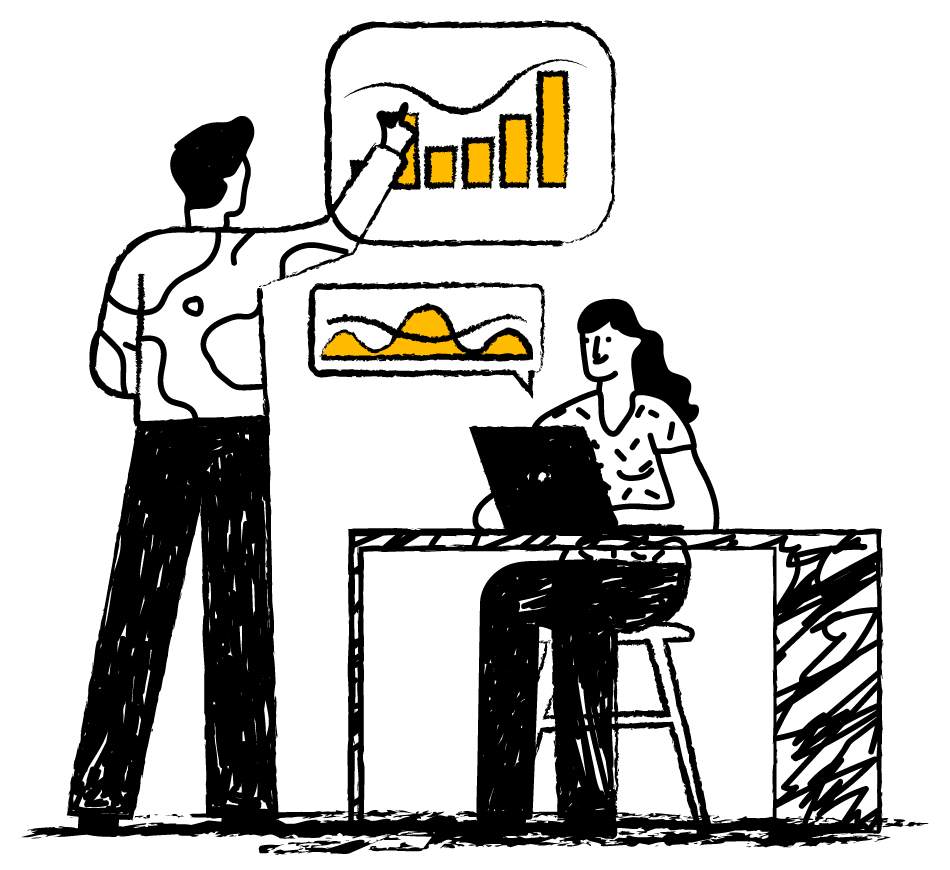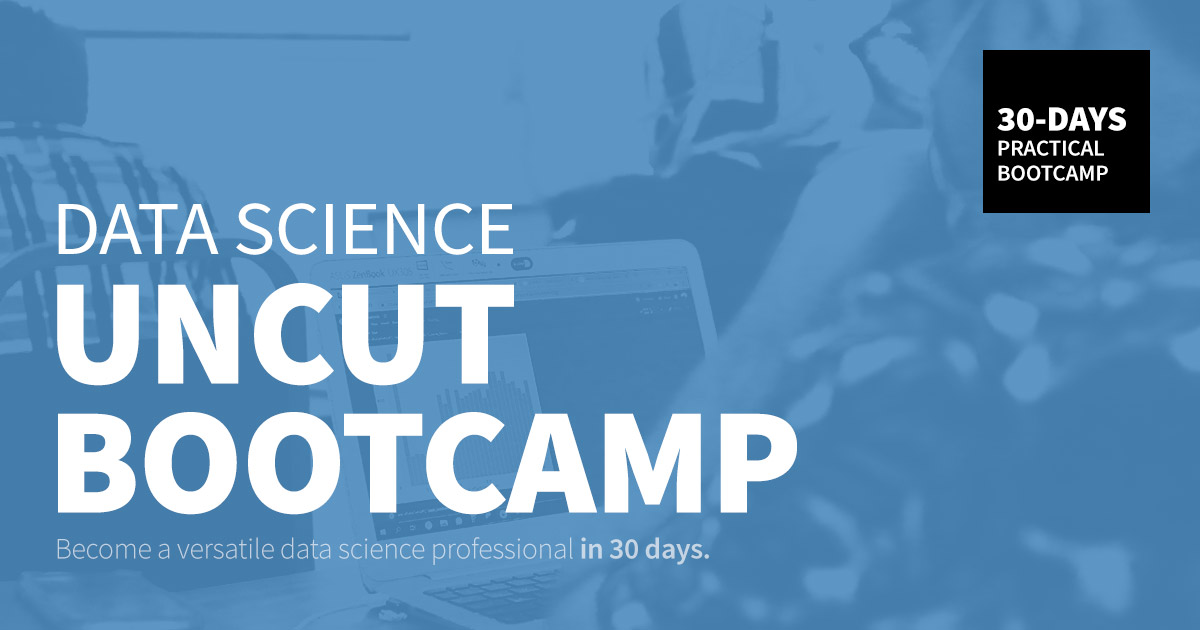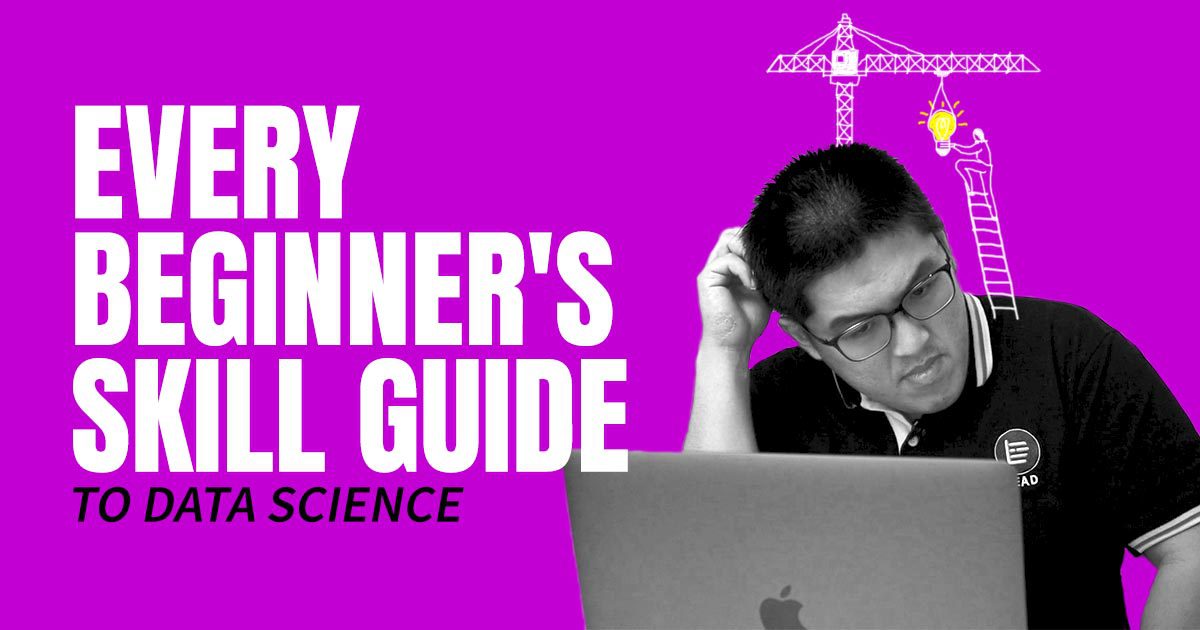What exactly is data science and what makes data science skills unique?
If you are a Data Science beginner looking to get into Data Science education, a Data Science career, or are simply a Data Science enthusiast- we’ve made a skill guide for you and your Data Science journey.
To start off, Data Science includes a wide variety of technical skills, especially in the 21st century.
Well, let’s illustrate data science in 3 major components – Computer science, domain knowledge, and mathematics.
So here are some broad areas in data science that you can choose to focus on:
Mathematics
A common misconception is that a high level of mathematics is necessary.
The truth is that areas of mathematics like calculus or quantum mathematics aren’t required.
Only basic mathematics, high school level, is necessary.
You’re not required to learn advanced maths e.g. algebraic expressions, coefficients, or any engineering-related maths in the field of data science.
One can dive deeper depending on whether or not they get into research.
The purpose of understanding Mathematics in data science is to aid in your thinking and problem-solving process.
Statistics

Knowing which statistical model to use e.g. linear regression, averages, or clustering, to solve a problem is essential.
It is fundamental for data scientists to know how to apply these theories rather than just deriving them.
Statistics is foundational to Data Science; there is a strong relationship between the two fields.
Statistics is a crucial discipline that provides us with tools and methods to find structure and gain deeper insights into data.
Natural Language Processing (NLP)
Natural Language Processing aka NLP is the science and art that assist us in extracting information from text and using it in our computations and algorithms.
With the increase of content on the internet and social media, it is among the must-have skills for data scientists.
Visualization techniques
Data visualization is used in many areas to represent complex events as well as to visualize phenomenons that cannot be observed directly.
This includes weather patterns, medical conditions, and/or mathematical relationships.
Machine Learning
Machine Learning is considered to be a core subarea of artificial intelligence.
It trains computers to get into a self-learning mode without explicit programming.
When fed new data, these computers learn, grow, change, and develop automatically, without human help.
The ability to automatically and quickly apply mathematical calculations to big data is now gaining a bit of momentum.
Machine learning has been used in several places, e.g. self-driving Google car, online recommendation engines, suggestions from Amazon, and cyber fraud detection.
Big Data Analytics

Big Data is a special application of data science, in which enormous data sets require assistance overcoming logistical challenges to deal with them.
The primary concern is expertly capturing, storing, extracting, processing, and analyzing information from these large data sets.
Big Data is the term that is used to encompass said large data sets, specialized techniques, and customized tools.
It is often applied to broad data sets to conduct general data analysis’ and find trends or in order to create predictive models.
Data Engineering

Data Engineers collect relevant Data.
They then go on to transform and move this Data into “pipelines” for the Data Science team to use.
They could use programming languages e.g. Java, Scala, C++, or Python, depending on their task.
Data engineering is an aspect of data science that concentrates on practical applications of data collection and analysis.
For all the work that data scientists do to answer questions using large sets of information, there have to be mechanisms for collecting and validating that information.
Data Analysis
Data analysis is defined as a process of cleaning, transforming, and modelling data to discover useful information for business decision-making.
The purpose of Data Analysis is to extract useful information from data, analyse it, and make decisions based on said data.
Data analytics is used within business to aid organizations in making better business decisions.
Whether it’s market research, positioning, customer reviews, or any other issue within which data exists – analyzing data will provide insights that organizations need in order to make the right choices.
Each of these areas will lead you to a different career path.
How do you know which area to start with?
Well, it depends on what you want to become.
Data Scientist
If you want to be a data scientist you need to focus on 4 of the 8 specific skills.
These are:
- Data Analysis
- NLP
- Visualization
- Machine Learning
But:
What is the relationship between Data Science and these skills?
Well when you walk into your first practical Data Science project/ experience, here’s what you might find:
-
Data Analysis and Data Science:

Data analysis is an important aspect of data management.
It paves the way for assisted decision-making in enterprises.
From an analysis perspective, the infrastructure must support both statistical analysis and deeper data mining.
The purpose of data analysis is to present a statistically significant result that can be used by enterprises to make critical decisions.
-
NLP and Data Science:

Natural Language Processing aka NLP is a wing that focuses on teaching computers how to read and interpret the text in the same way as humans do.
It is a field that develops methodologies to fill in the gap between Data Science and human languages.
Everything we speak or express holds great information which can be useful in making decisions.
Extracting this information is not that easy as humans can use a number of languages, words, tones, etc.
The data that we generate via our online conversations, tweets, etc is highly unstructured.
Traditional techniques are not able to extract insights from this data.
But advanced technologies like machine learning and NLP have brought a revolution in the field of Data Science.
Many areas e.g. healthcare, finance, media, HR, and more use NLP to utilize the data available in the form of text and speech.
Several text and speech recognition applications are built with the help of NLP- this includes personal voice assistants e.g Siri and Alexa.
-
Visualization and Data Science:
Many data scientists pay little attention to graphs and mainly focus on the numerical calculations.
This can be misleading.
Data visualization helps to tell stories by curating data into a form easier to understand, highlighting the trends and outliers.
A good visualization tells a story, removing the noise from data and highlighting the useful information.
E.g.
Which one is easier for you to interpret the severability, if I told you the number of COVID cases in Malaysia?
Selangor – 353 Perlis – 0 Penang – 104 OR if I simply show you a map visualization?
However, it’s not as simple as making a graph look fancy.
Effective data visualization is a delicate balancing act between form and function.
The plainest graph could be too boring to catch any notice or it makes a powerful point.
The most beautiful or “fancy” visualization may fail at conveying the right message or it could speak volumes.
The data and the visuals need to work together, and there’s an art to combining great analysis with great storytelling.
Skill sets are changing to accommodate a data-driven world.
It is increasingly valuable for professionals to be able to use data to make decisions and use visuals to tell stories of when data informs the who, what, when, where, and how.
While traditional education typically draws a distinct line between creative storytelling and technical analysis, the modern professional world also values those who can cross between the two: data visualization sits right in the middle of analysis and visual storytelling.
There’s always a mismatch of information between technical people and marketing/business leaders.
Data is simply numbers, but with visualization, it comes meaning.
Visualization refers to the practice of visualizing so that other people can understand.
This is where your basic knowledge of business acumen and effective communication comes into play.
-
Machine Learning and Data Science:

One crucial reason why data scientists need machine learning is:
‘High-value predictions that can guide better decisions and smart actions in real-time without human intervention.’
Machine learning as technology helps analyze chunks of data, minimising the tasks of data scientists in an automated process.
Machine learning has changed the way data extraction and interpretation works by involving automatic sets of generic methods that have replaced traditional statistical techniques.
Machine learning and data science work hand in hand.
Take into consideration the definition of machine learning – the ability of a machine to generalize knowledge from data.
Without data, there is very limited that machines can learn.
If anything, the increase in usage of ML in many industries will act as a catalyst to push data science to increase in relevancy.
Machine learning is only as good as the data it is given and the ability of algorithms to consume it.
One of the most relevant data science skills is the ability to evaluate machine learning.
In data science, there is no shortage of cool stuff to do, especially with all the shiny new algorithms to throw at data.
However, what it does lack is: “why things work” and “how to solve non-standard problems,” this is where machine learning will come into play.
So there you go!
These are the skills you need if you want to get into Data Science and how the key skills are used in your Data Science Career.
For a fun Bootcamp on data science to learn all the skills listed above and more application guidance visit LEAD’s Data Science Uncut Bootcamp.

You will get one to one attention in these small boot camp, run by Dr Lau and Edmund, LEAD’s instructors.
These in-person classes will help you learn more about Data Science techniques and Data Science perspectives.
As always, email us at chelsea@lead.io for advice, tips, or suggestions.
Or anything else really- we want to help you grow.


0 Comments